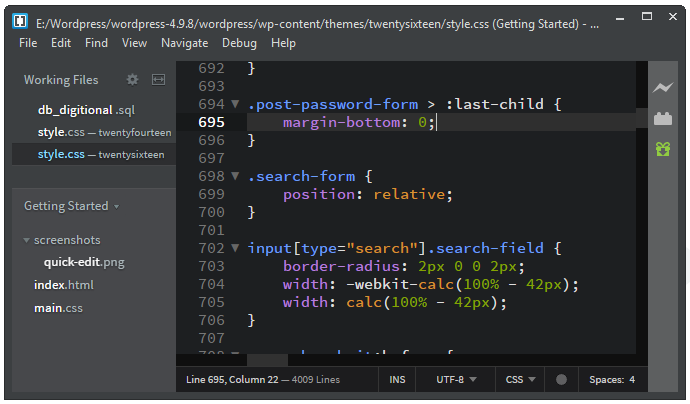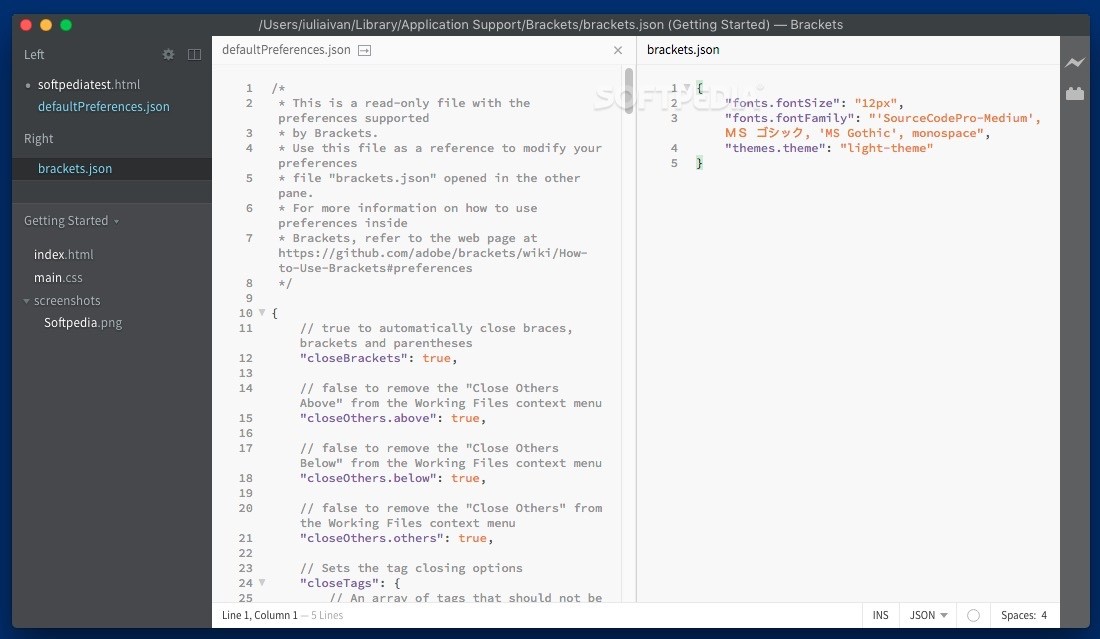
In general, the color schemes are intended to reproduce the style of the built-in themes in Adobe Brackets, but there are a few minor differences.ĭeviations in syntax highlighting are possible due to the different highlighting engines in the editors. Differences from the Adobe Brackets themes Here is an example with the default colors applied:

The color scheme format allows to customize color variables and override or add user-specific highlighting rules via the UI: Customize Color Scheme entry from the command palette, see also this example in the official documentation.įor the color variable names used by this scheme, refer to the color palette above.Īpart from the listed color names, a few additional variables are used and can be modified to tweak highlighting colors for certain tokens. This color scheme uses color definitions and highlighting rules based on a JSON format, which was introduced in Sublime Text 3.1 (Build 3170). User defined functions, mapping keys, CSS property namesĪnnotations, headings in markup languages Strings, built-in constants, arguments in function definitions Keywords, intrinsic/library functions and classes, tags Plain text, variables, constants, operators, punctuations The color scheme can then be activated from the menu under Preferences > Select Color Scheme… or via the UI: Select Color Scheme command from the command palette.

The color scheme can be installed with Sublime Text's package manager Package Control.įrom the command palette select Package Control: Install Package and search for Brackets Color Scheme. This package for Sublime Text provides two color schemes (light and dark) that are similar to the built-in themes of Adobe Brackets.


 0 kommentar(er)
0 kommentar(er)
